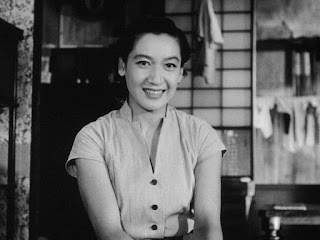[Did this short review for India Today – about Vikram
Paralkar’s The Afflictions, a novel (if that’s the right word for it) about a
library of very strange, and sometimes recognizable, ailments]
-------------------------------
 What a strange and compelling book this is. It’s easy to
call it Borgesian (especially since one of the epigraphs is from Borges’s The Library of Babel), but that doesn’t
begin to explain its effect. Nor is it a novel in the sense that most of us are
used to – a narrative with a clear beginning, middle and end. Instead, physician-scientist
Vikram Paralkar offers us glimpses from the precious Encyclopaedia Medicinae, housed
in the Central Library in an unspecified time and place – though the setting
and the style of the writing appears medieval.
What a strange and compelling book this is. It’s easy to
call it Borgesian (especially since one of the epigraphs is from Borges’s The Library of Babel), but that doesn’t
begin to explain its effect. Nor is it a novel in the sense that most of us are
used to – a narrative with a clear beginning, middle and end. Instead, physician-scientist
Vikram Paralkar offers us glimpses from the precious Encyclopaedia Medicinae, housed
in the Central Library in an unspecified time and place – though the setting
and the style of the writing appears medieval.
Using a very short framing story about a man named Maximo
being shown around by the head librarian, the bulk of Paralkar’s book is simply
a chronicle of some of the ailments recorded in the encyclopaedia. Grotesque,
mystical, these are clearly imagined afflictions – or are they? Some are
clearly otherworldly: in “Osteitis deformans preciosa”, the invalid’s bones
keep folding back on themselves, even beyond death, until a year later a whole
skeleton has been reduced to a concentrated, eyeball-sized diamond. But others
are more plausible, with echoes in the human condition as we know it: blank
spots in the mind, so that only fragments of certain incidents can be
remembered; a disease called “Morbus geographicus” where the patient must
detach himself from each place where he has just settled down, and travel to
new pastures for healing. Readers familiar with the medical writings of Oliver
Sacks (The Man Who Mistook His Wife for a
Hat) or VS Ramachandran (Phantoms in
the Brain) may be reminded of the more unusual neurological cases discussed
in those books.
 Each entry is accompanied by a simple yet resonant
illustration by Pia Valentinis, and the writing style is deliberately
impassive, though there is some theological speculation: could Cursed Healer
Syndrome, in which the sufferer takes on the disfigurements of people around
him, be “a gift from the Lord”, a version of Christ suffering for others’ sins?
Each entry is accompanied by a simple yet resonant
illustration by Pia Valentinis, and the writing style is deliberately
impassive, though there is some theological speculation: could Cursed Healer
Syndrome, in which the sufferer takes on the disfigurements of people around
him, be “a gift from the Lord”, a version of Christ suffering for others’ sins?
“If you read the Encyclopaedia from beginning to end,” the
head librarian says, “you get the feeling that every affliction known to man is
part of a single, infinite progression. Or that every disease is a different
facet of a great and terrible malady.” This book is a commentary on the
multi-pronged relationship between our bodies and minds – something that even
today’s science is incapable of revealing too much about. There are reflections
on the nature of memory, and on the creation of art: one disease causes the
ears of  illiterate peasants to ring with sounds that turn out to be notes from
a sophisticated musical composition; another gives its victims such powerful
visions that they have no option but to express them through art, but flounder,
producing only mediocre books and paintings. (How relatable this would be to
the countless frustrated Salieris of the real world!)
illiterate peasants to ring with sounds that turn out to be notes from
a sophisticated musical composition; another gives its victims such powerful
visions that they have no option but to express them through art, but flounder,
producing only mediocre books and paintings. (How relatable this would be to
the countless frustrated Salieris of the real world!)
 illiterate peasants to ring with sounds that turn out to be notes from
a sophisticated musical composition; another gives its victims such powerful
visions that they have no option but to express them through art, but flounder,
producing only mediocre books and paintings. (How relatable this would be to
the countless frustrated Salieris of the real world!)
illiterate peasants to ring with sounds that turn out to be notes from
a sophisticated musical composition; another gives its victims such powerful
visions that they have no option but to express them through art, but flounder,
producing only mediocre books and paintings. (How relatable this would be to
the countless frustrated Salieris of the real world!)
And occasionally, there is something that reads like a
straightforward anthropological observation. Individuals with “Empathia
pathologica”, we are told, develop a crippling susceptibility to the moods of
others: “It is only in absolute seclusion, far from all human contact, that
they can be certain they are savouring joys or sorrows that are truly their
own.”
-->









